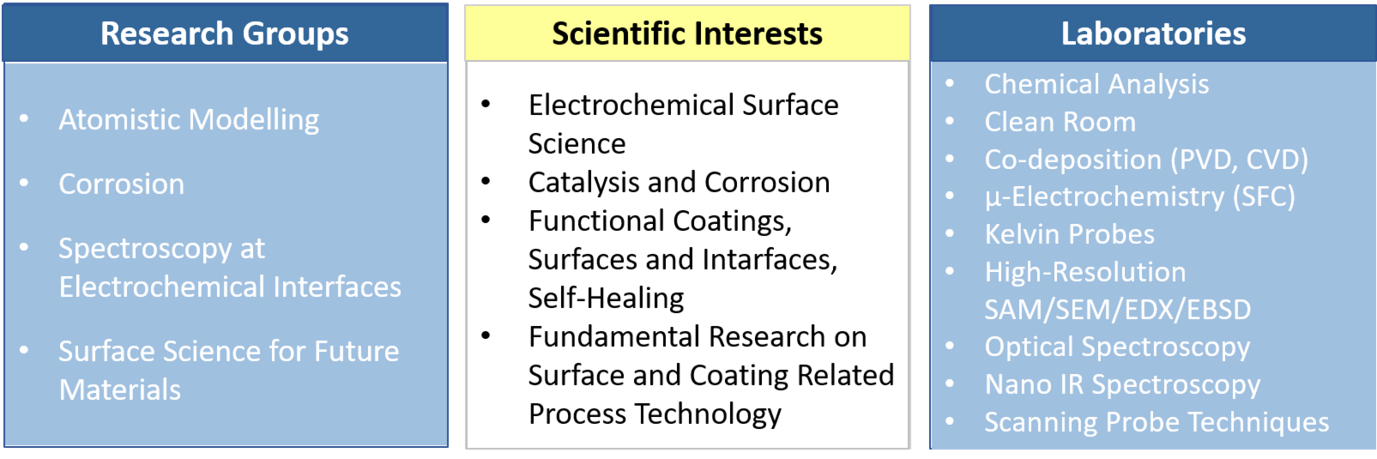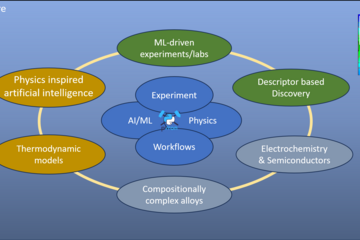Of crucial importance in the last years was to stabilize the department. Since the head of the department
Martin Stratmann, took over as president of the
Max Planck Society from June 2014 to June 2023 and has officially been an emeritus scientific member of the MPIE since July 2023, there have been significant changes in the department. Michael Rohwerder took over the coordination of the department and Jörg Neugebauer (head of the department “
Computational Materials Design”) acts as temporary head of the department. Most notably the number of research groups shrank quickly from six in 2014 to two in 2019. However, the research group of Andreas Erbe (
Optical Spectroscopy) remained very active as a guest group until end of 2019, and the one of Karl Mayrhofer (
Electrocatalysis) too, to be followed by the very active guest group of Olga Kasian (
Dynamic Electrocatalytic Interfaces, until end of 2021). In 2020 the early career research group “
Spectroscopy at Electrochemical Interfaces” was established in the GO department as joint research group of the MPIE and the cluster of excellence
RESOLV located at the
Ruhr-Universität Bochum (RUB). The group uses interface spectroscopic methods to study solvation and other dynamic effects on solid surfaces interfaces. By establishing this new group important expertise could be regained.
Patricia Jovičević-Klug's new research group (Surface Science for Future Materials) has been active since February 2024. The focus of this group is the investigating (geo)chemical, corrosion and wear interactions of the surface to bulk level using surface analysis and advanced method of testing.




